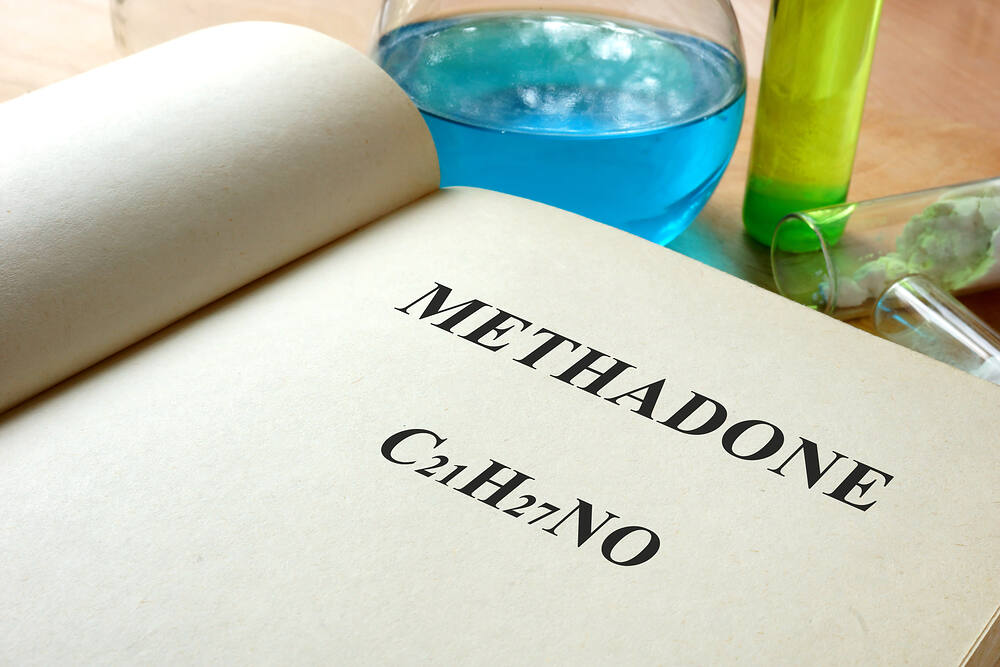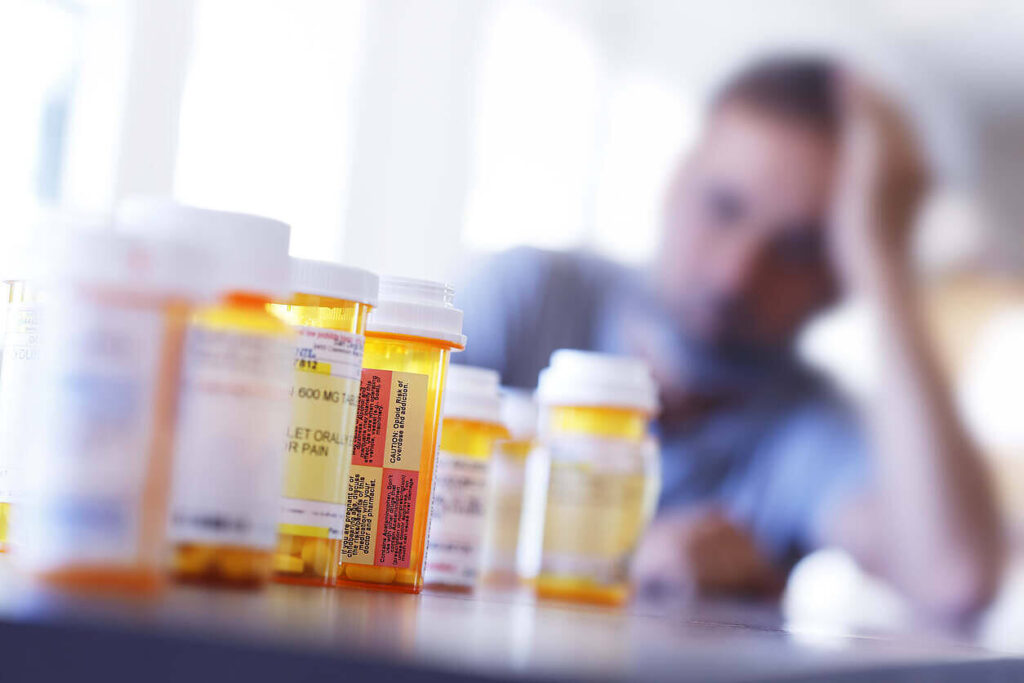What is Methadone?
Most well known for being a substitute for heroin and is often prescribed to those suffering from opiate addiction and dependence. Methadone has been used as a substitute for opioids in maintenance and detoxification since the 1960s. Methadone (Dolophine® or Methadose®) belongs to a class of prescription drugs called synthetic agonist opioids and is a slow-release medication.

As an opioid agonist, methadone interacts with an opioid receptor in the brain to produce an optimum response from that receptor. This means that it is very efficient in preventing opioid withdrawal symptoms and in providing strong analgesia.
Methadone was initially developed during World War 2 to treat severe pain. Today, hospitals tend to favour morphine for severe pain as its onset of action is quicker. However, the drug may still be prescribed in the instances of severe and ongoing pain, such as an injury, chronic illness or post-operative procedure.
The most common way a person becomes addicted to opioid drugs is through what is known as pharmacology, more commonly known as methadone maintenance or substitution.
Pharmacology involves substituting a dangerous drug with a prescribed drug that is considered a safer option. As such, methadone is often prescribed as a replacement for other powerful illicit opioids.
To reduce the social, financial and physical risks associated with opiate addiction and dependence, the drug can be prescribed to discourage opiate use and stabilise a person’s drug use. Ideally, for the best long term results, methadone maintenance should be combined with behavioural therapies (pharmacotherapy). The end goal is that the person tapers off methadone and becomes totally opioid-free.
The problem is that methadone is a powerful opiate with potentially addictive qualities. Therefore, it is easy (and sadly quite common) for a person who is prescribed methadone to become “stuck” on a methadone script, having adapted physically and mentally to function with it.
If you or a loved one suffer from abuse or addiction, we can help. As one of the UK’s leading treatment providers, we specialise in treating all manner of opioid addictions through our CQC registered inpatient detox and rehabilitation treatment centres.
Fortunately, there are recovery centres throughout the UK where people can get help with withdrawal and overcome addiction once and for all.
The risks associated with an addiction to methadone
One of the biggest risks associated with methadone addiction and dependence is taking more than prescribed or using another opioid or central nervous system (CNS) depressant drug on top. Abusing methadone in this way can ultimately result in respiratory depression, coma and death.
Whilst methadone blocks the high from other drugs such as hydrocodone; this does not stop their depressive action on the central nervous system. A person could therefore end up taking more opioids in an attempt to feel high and, consequently, unintentionally overdose.
The risk of overdose is also increased when a person mixes methadone with alcohol. Alcohol use is strongly discouraged whilst taking a prescription for the drug. Studies have shown that mixing methadone and alcohol can not only cause respiratory depression but can also cause increased aggression.
It can make you feel extremely drowsy and impair the body’s response system, especially when effects first set in. These effects tend to lessen over time as the body develops a tolerance to methadone. Initially, a person prescribed methadone should not drive or operate heavy machinery until they know how the drug affects them.
Another significant risk associated with use is methadone tolerance and dependence. This is a risk that is heavily associated with all opioid drugs, prescription or illicit. Because methadone allows its users to live a more stable life than if they were using heroin, there tends to be less incentive to stop, especially when it can be so hard to withdraw from when used for lengthy periods of time.
How methadone works as a replacement for heroin:
- Prevents heroin withdrawal symptoms
- Reduces cravings
- Blocking highs that can otherwise be induced by other opioids
- Reduces harms associated with needle use
- Reduces social, economic and physical harms associated use
- Reduces criminal activity associated with the use
- Reduces opioid-related deaths
- Encourages social reintegration
- Encourages stabilisation so that a person can maintain relationships and employment
Methadone is a very affordable drug compared to other prescription opioids such as Oxycodone and Hydrocodone, and so is favoured for long term opioid maintenance.
Buprenorphine (Subutex) is another prescription opioid commonly used to treat heroin addiction and is often combined with Naloxone to prevent opioid abuse.
How do I get prescribed Methadone?
The medication can only be prescribed by a qualified doctor or physician. If you suffer from opioid addiction and wish to stop, your local drug and alcohol team can provide you with free support and an in-depth doctor’s assessment of your use.
Taking methadone as a substitute for heroin means you will need to attend a local pharmacy daily to ensure you take the correct dosage and by the correct method of administration (orally). You will also be required to attend your local drug and alcohol team for weekly drug testing for the presence of other opioids and to meet with your allocated key worker.
Methadone can be abused and is a hazardous drug when misused. Because of this, strict protocols have been put in place to reduce the appeal of abuse and therefore reduce methadone related overdoses.
For those that can afford private treatment for addiction, a residential detox and rehabilitation programme is strongly recommended. This will not only enable you to become completely opioid-free but also arm you with the tools and knowledge to rebuild an infinitely better quality of life.
Following detoxification and rehabilitation for methadone addiction, you will also have the option of having a Naltrexone implant fitted. This, for many who have struggled with opioid addiction, offers added reassurance against relapse and continued recovery.
Methadone V’s Buprenorphine
Buprenorphine is approximately double the cost of methadone; it is therefore considered the more cost-effective option, especially when used in a long term maintenance plan.
Despite it being far more commonly prescribed, buprenorphine carries fewer risks and is considered a much safer option.

Buprenorphine has several significant benefits when used in opioid maintenance or opioid detox plan:
- Buprenorphine causes less respiratory depression, reducing the risk of respiratory arrest.
- Buprenorphine possesses a ceiling effect, making it pretty pointless to take more
- Buprenorphine has a lower fatality rate
- Buprenorphine is often combined with naloxone (Suboxone), which strongly discourages opioid abuse. Abusing Suboxone results in acute opioid withdrawal
- There are no significant differences in side effects between methadone and buprenorphine
How does methadone work?
Methadone works on an opioid receptor in the brain, which changes how your brain responds to and perceives pain, thus providing effective pain relief.
Methadone has a slower onset of action when compared to other pharmaceutical opioid drugs such as morphine or codeine; however, this does not mean it cannot be abused.
The effects produce a less powerful high than drugs such as morphine, yet it is very efficient in reducing opioid cravings and preventing withdrawal. This enables a person taking it as a substitute for heroin to be far more functional and carries far less risk in terms of associated harms and overdose.
Methadone key facts
- In 2019 in England and Wales, 407 deaths were recorded for the drug
- In Scotland 2019, 560 methadone related deaths were recorded – the same as in 2018. This equates to 44% per cent of all drug-related deaths for that year
- The majority of all drug-related deaths in the UK are attributed to people taking more than one substance
- Methadone can cause opioid tolerance and dependence
- Side effects include pinpoint pupils, nausea, severe constipation, decreased blood pressure, decreased respiratory rate, decreased heart rate, sweating, and mood swings
- Long term use can result in the development of mental health illnesses such as anxiety and depression
- People with a long term addiction and dependence find it extremely hard to detox in a community setting
- Long term use can result in respiratory issues as a result of chronically reduced respiration rates
- Methadone does not cure addiction. To stay clean from heroin, a person will need to undergo intensive behavioural therapy to support a methadone maintenance plan or methadone reduction regime
- Long term use causes lasting changes to the brain associated with learning and memory. The brain’s pleasure/reward system is also significantly impaired by ongoing use
- Those addicted are at high risk of suffering from behavioural issues, mainly poor judgment and increased risk-taking
- Mixing with another CNS depressant such as alcohol, benzodiazepines, or another opioid can result in overdose and death
- Long term use can disrupt the menstrual cycle in women and can cause erectile dysfunction in men
- Methadone is half the cost of buprenorphine, making it a first in line pharmaceutical treatment
- Methadone can be abused by changing the route of administration from oral to injection
- Using methadone as a replacement for heroin means you will not experience the true freedom that comes with complete abstinence.
Methadone withdrawal symptoms
Like all opioids, prolonged use leads to opioid dependence. The longer you are dependent on methadone and the higher dose you have become tolerant to, the more severe your withdrawal symptoms will be.
Methadone withdrawal is notoriously unpleasant, especially from higher doses. It can take some people months, even years, to successfully wean off it whilst staying clean from other opioids in a community setting.
Depending on how quickly you detox will dictate the severity of your methadone withdrawal. In a residential setting, withdrawal symptoms are controlled and managed by a pharmaceutical regime and intensive support and treatment.
Methadone detox in the community via your local drug and alcohol team, unfortunately, means frequent contact with others that are using drugs. Breaking one of the methadone safety protocols can result in a delay or the stopping of your methadone script. This will put you at extremely high risk of returning to heroin and overdosing or suffering from severe methadone withdrawal symptoms.
Methadone was developed especially to treat heroin and other opioid addictions. Because of this, when gradually withdrawn, its symptoms are generally less severe than withdrawal from other opioids.
Methadone stays in your system for 1 to 3 days, so the onset of withdrawal is delayed compared to most other opioids.
Methadone withdrawal symptoms include, but are not limited to:
- Runny nose
- Cough
- Watery eyes
- Dilated pupils
- Sweating
- Tremors
- Stomach pain
- Stomach upset and diarrhoea
- Nausea or vomiting
- Aches and pains
- Insomnia
- Restlessness
- Impaired concentration and cognitive ability
- Muscles aches and cramps
- Loss of appetite and weight loss
- Fever
- Overactive senses
- Increased heart rate and blood pressure
- Mood swings
- Anxiety and panic
- Depression
- Irritability
Undergoing an inpatient medical detox for methadone will reduce the amount of discomfort you experience and reduce the length of time it takes you to stop opioids for good.
Methadone addiction treatment
If you or a loved one have an addiction or dependence and want to stop, help is available.
Long term methadone use carries increasing health complications and can adversely affect your mental health.
Community detoxes can prove extremely challenging due to temptation and the unpleasant opioid withdrawal symptoms when reduced or stopped.
Admitting to a private drug rehab facility with Detox Plus UK will give you the best chance of stopping methadone successfully and maintaining a healthy and long addiction recovery.
The benefits of inpatient treatment programs include, but are not limited to:
- A bespoke medical detox to help you stop safely and comfortably
- 24/7 care and support delivered by qualified nurses and support workers
- A safe, nurturing and temptation free environment
- Undergo intensive, evidence-based therapies delivered by a multidisciplinary team of professionals
- A tailored holistic programme
- Receive professional treatment for any co-occurring illnesses and have multiple addictions treated
- Undergo behavioural therapies, specifically tailored to your individual treatment needs
- Benefit from a family programme and ongoing support for your family
- Undergo a bespoke, comprehensive rehabilitation programme
- Free aftercare programme on completion of treatment



